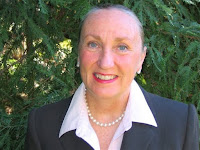We need to get past 'devotional' stereotype
By Mike Haynes
It’s a
little late for Christmas, but if you’d like to give someone a gift they can
use all 365 days of 2019, I have a couple of suggestions.
Every night
of 2018 so far, after plugging in my phone and before turning off the light, I
have read one of 365 devotionals in Mark Lanier’s book, “Psalms for Living:
Daily Prayers, Wisdom, and Guidance” (Baylor University Press, 2016).
I know,
“devotional” is a somewhat churchy word conjuring up visions of ladies sitting
in a circle, drinking tea and reading inspirational prose to each other. But we
need to get past that stereotype.
I don’t
know of a branch of Christianity that doesn’t stress that believers need a
daily link to God. One aspect of that connection is prayer, and another is
paying attention to God’s direction for us in his Word, the Bible.
The Old
Testament makes it clear: “Keep this Book of the Law always on your lips;
meditate on it day and night, so that you may be careful to do everything
written in it. Then you will be prosperous and successful.” (Joshua 1:8, NIV)
Nothing can
beat reading God’s Word directly, but it also helps to hear other believers’
takes on it through sermons, discussions and, yes, devotionals.
Mark Lanier
said he wrote “Psalms for Living” primarily as one way to pass on the wisdom
he’s learned in his 50-plus years to his children, extended family and close
friends. The former Lubbock resident, Texas Tech University graduate,
nationally known trial lawyer and founder of Houston’s Lanier Library is not a
theologian but has training in Hebrew and Greek, teaches a Sunday school class
that attracts hundreds and is the author of “Christianity on Trial: A Lawyer
Examines the Christian Faith” (InterVarsity Press, 2014)
Each page
of “Psalms for Living” starts with a short passage from the book of Psalms
followed by Lanier’s interpretation and thoughts on those verses and ending
with a short prayer. And even though I’ve read each page with a pillow behind
my head, they certainly haven’t put me to sleep.
For
example, the Oct. 20 page, based on Psalm 116:12-14, starts this way:
 “I make no
bones about it. If I had only one band I could listen to for the rest of my
life, it would be U2.”
“I make no
bones about it. If I had only one band I could listen to for the rest of my
life, it would be U2.”
Lanier then
discusses the U2 song, “Where the Streets Have No Name,” which he believes
refers to heaven. It’s well known that the Irish rock band’s lead singer, Bono,
has professed his faith in Christ. Lanier says Bono often introduces this hit
song by quoting Psalm 116:12-14, which begins, “What shall I render to the LORD
for all his benefits to me?” (ESV)
On one live
recording, the rock star relates the verse to himself: “What can I give back to
God for the blessings he poured out on me?”
Lanier
doesn’t make every page about pop culture. Sometimes he uses his knowledge of
the original language to point out nuances of Hebrew poetry in a passage. He
recalls lessons he learned from his college minister. He writes about how being
grounded in his faith has kept him stable in the often-stressful law
profession.
And if
you’re older or younger than most fans of U2, don’t worry that this book is for
just one generation of readers. It focuses primarily on how the Psalms point us
toward the love of God and salvation in his Son. It also motivates us to put
biblical principles into practice every day.
My second
suggestion is brand new this month. It’s Lanier’s “sequel,” “Torah for Living: Daily
Prayers, Wisdom and Guidance” (Baylor University Press, 2018). As the title
indicates, this book does the same thing with the first five books of the Bible
that the author did with the Psalms. Like the Psalms book, it’s available from
the usual online booksellers.
Of course,
scores of excellent devotional books are on the market by well-known people
such as Max Lucado, Lysa Terkeurst, Tony Dungy and Tim Keller, but these two
efforts by someone who grew up in West Texas might strike a chord with people
in our area.
I haven’t
seen the Torah book yet, but if I get it into my online cart soon enough, I
hope it will keep me thinking more deeply about God starting New Year’s Day.






















